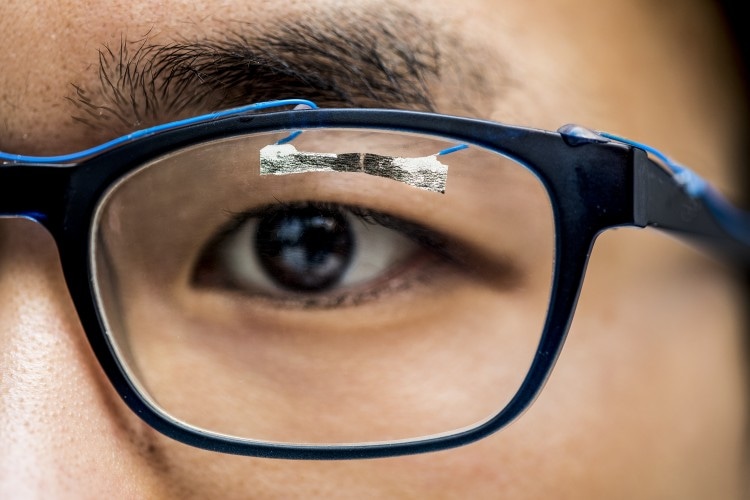Feb 19 2018
Engineers at the University of Washington have transformed tissue paper, same as toilet tissue, into an innovative type of wearable sensor with the ability to detect a blink of an eye, a pulse, and other human movements. The sensor is flexible, lightweight, and low-cost, including prospective applications in the entertainment, healthcare, and robotics fields.
 University of Washington graduate student, Jinyuan Zhang, demonstrates how wearable sensors can track eye movement. (Image credit: Dennis R. Wise/University of Washington)
University of Washington graduate student, Jinyuan Zhang, demonstrates how wearable sensors can track eye movement. (Image credit: Dennis R. Wise/University of Washington)
The technology has been explained in a paper published in the Advanced Materials Technologies journal in January 2018 and indicates that when tissue paper incorporated with nanocomposites is torn and the paper’s fibers are broken, the paper functions like a sensor. It has the ability to detect finger force, eyeball movement, a heartbeat, finger movement, and much more, stated Jae-Hyun Chung, senior author of the study and a UW associate professor of mechanical engineering.
The major innovation is a disposable wearable sensor made with cheap tissue paper. When we break the specimen, it will work as a sensor.
Jae-Hyun Chung
These tiny, Band-Aid-sized sensors can find a range of applications in distinctive fields. For instance, monitoring of a person’s eye movement or their gait can help in investigating the brain function or a game player’s actions. The sensor might be used to track the way a differently able child walks in a home test, avoiding the need for hospital visits for the child. The sensors could also be used for performing occupational therapy for the elders.
“They can use these sensors and after one-time use, they can be thrown away,” stated Chung.
In their study, the researchers used paper similar to toilet tissue. Then, the paper, no special than prevalent paper towels, is drenched with water laced with the carbon nanotube. Carbon nanotubes are very small materials that develop electrical conductivity. Every tissue paper piece includes horizontal as well as vertical fibers. Therefore, if the paper is torn, the direction of the tear indicates the sensor of the nature of the incident. In order to track eye movement, the tissue is attached to the reading glasses of a person.
At present, the study is restricted only to the laboratory level, and scientists are striving to find an appropriate commercial application. A provisional patent was filed for the technology in December 2017.
UW College of Engineering graduate student Jinyuan Zhang is the lead author of the paper. Undergraduate student Cerwyn Chiew, mechanical engineering professors Minoru Taya and Dayong Gao, aeronautics and astronautics professor Jinkyu Yang, and postdoctoral scholar Gil-Yong Lee, all from UW; and graduate student Fabrice Fondjo and professor Jong-Hoon Kim of Washington State University, Vancouver, are the other co-authors of the study.
Samsung Research America partially funded the research through the Think Tank Team Award.